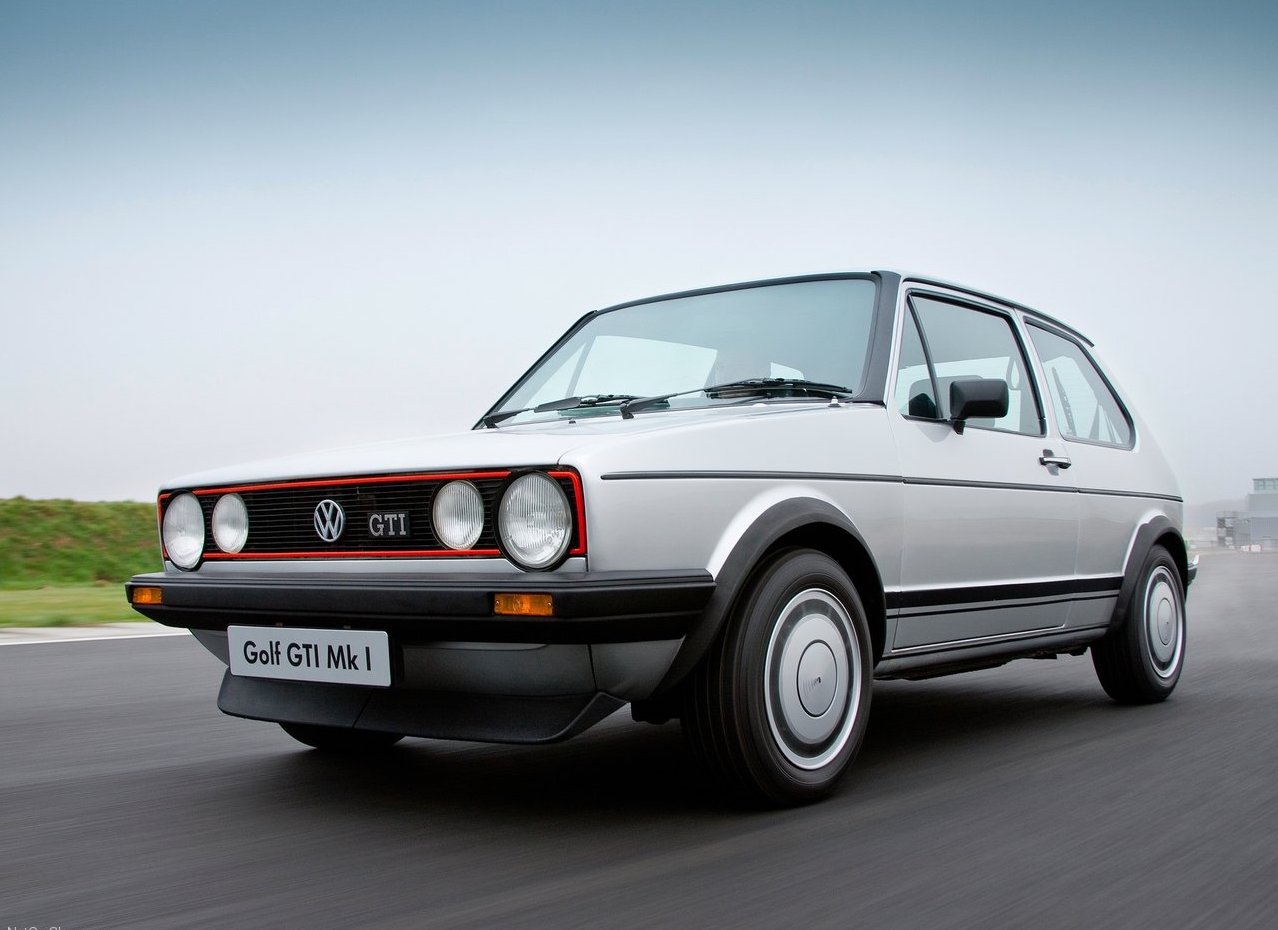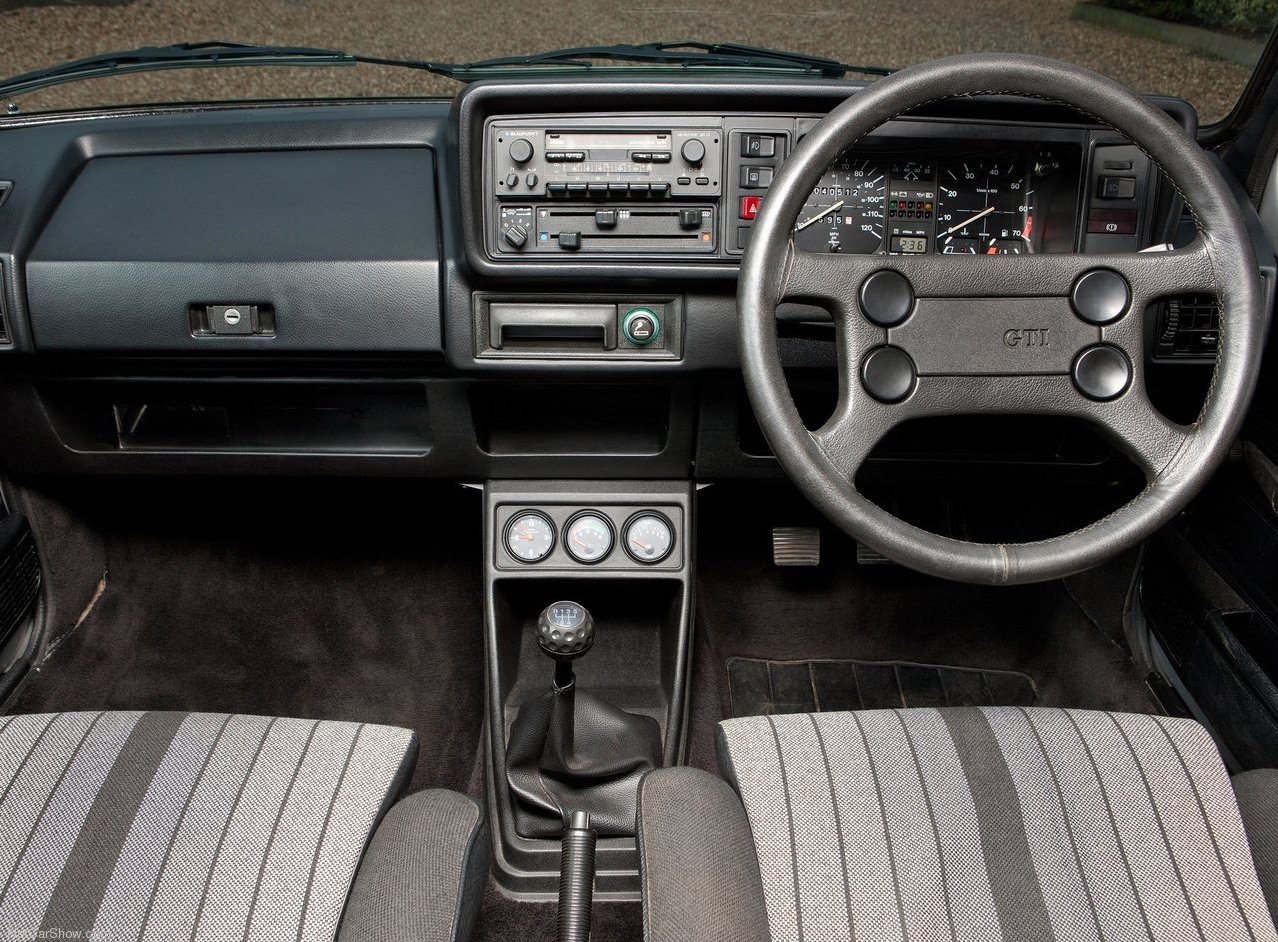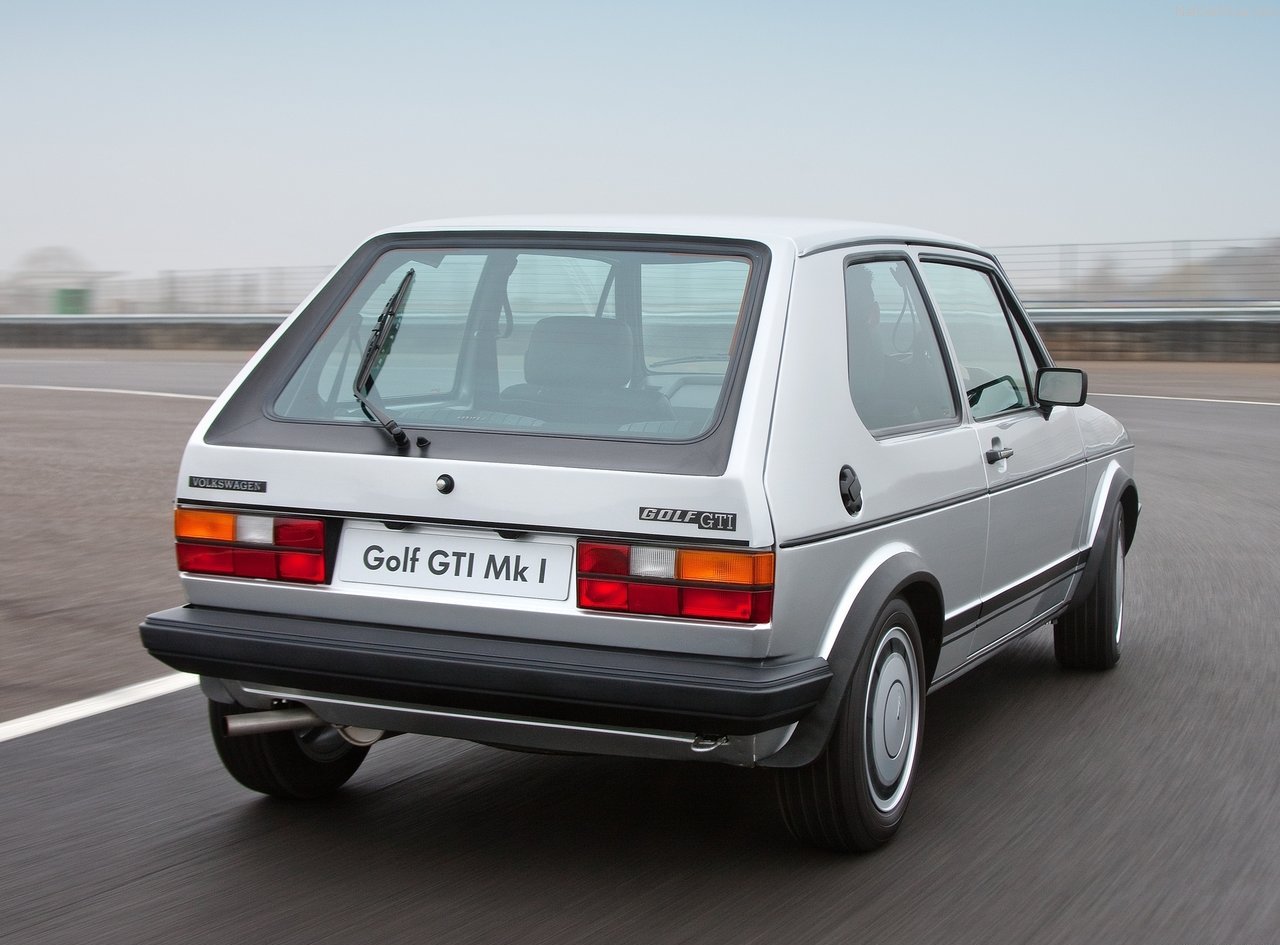In 1974 the Volkswagen Golf was introduced to the European market. This front-engined,front-wheel drive hatchback was destined to replace the revered Volkswagen Beetle. Early in its development a few staff members at Volkswagen H.Q in Wolfsburg, Germany wanted to develop a sporty version of the Golf. After initial prototypes passed some rigorous tests, the sport Golf was presented to a Herr Schmucker, who was Chairman of the Board of Management.
Herr Schmucker was keen on the new model and he subsequently gave his permission for production to start. The name "GTi" was agreed upon and it was decided to borrow the 4 cylinder 1588cc unit from the Audi 80 GTE. This unit used a Bosch K-Jetronic fuel injection system and produced some 81 KW at 6100 rpm, with 137 N.m torque at 5000 rpm. With a body mass of around 900 kg, this would transform the Golf from a honest family hatchback to something more proliferate.
The original Golf bodyshell, designed by Italian stylist Giorgetto Giugiaro, was used and certain components were upgraded. There was now a red edge around the radiator grille, extensions around the wheel arches, a front lip spoiler and a new sports steering wheel. A golf ball was attached to the selector rod which made for a new gear knob.

The three-door GTi was introduced at the Frankfurt Motor Show in 1975. The motoring press loved it and the first models were sold to the public in 1976. Initially it was planned to produce 5000 units of the GTi but demand proved so strong that the factory needed to increase production. In fact over 460 000 units of the Mk1 Golf GTi were manufactured and sold, until Golf 2 was introduced to the European market at the end of 1983.
However the Golf did not have its own way and soon the competition came up with their own versions of sporty hatchbacks. The Renault 5 turbo, manufactured at the Alpine factory in Dieppe, France came to the party with 118 KW at the end of 1980. The French car however suffered from turbo-lag so it was not really usable in day- to- day driving conditions. Also, the engine was placed where the back seat would normally be so this car had become a two-seater. So in terms of practicality the Renault was nowhere near the golf.
The Peugeot 205 GTi , released in Europe in 1984 gave notice that it also wanted to be part of the club.
Probably the most serious threat to the Golf GTi was the Fiat Strada 130 TC Abarth, also unveiled in Europe in 1984. The Strada made use of a 1995cc 4 cylinder that produced 95 KW at 5900 rpm.

It would take until 1983 for the Golf GTi to be offered in South Africa. By now the engine capacity had been upped to 1781cc. Maximum power was 82 KW at 5800 rpm and maximum torque was now 153 N.m at 3500 rpm. It was decided to offer the GTi in five-door versions only in the South African market. The first models had a charcoal-grey coachwork finish, with matching tweed cloth grey upholstery. A quad-lamp front grille was used for the first time.
As the January 1983 edition of CAR magazine demonstrated, the GTi had very little competition in the South African market. Their test car accelerated from 0-100 Km/h in 9,3 seconds, did the standing start 1 Kilometre sprint in 30,7 seconds and attained a maximum speed of 182 Km/h. The Opel Kadett 1.8 GTE, released in South Africa in the second half of 1984, could accelerate at a similar degree to the Golf but did not have the same chassis composure as the VW. Also, the Golf was felt to have better steering.

The original Golf GTi. Considered by many to be the archetypal "hot hatch". Some would call it a Legend.
Written by your All Things Motoring International Correspondent in Charlotte, North Carolina, U.S.A











